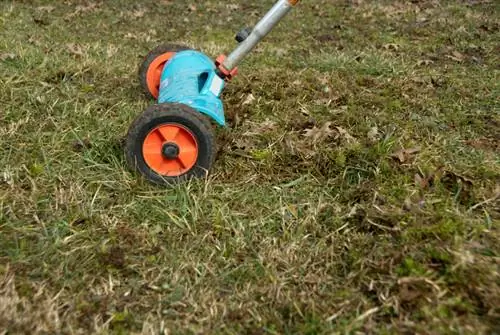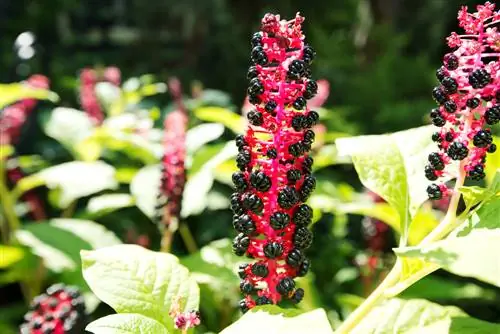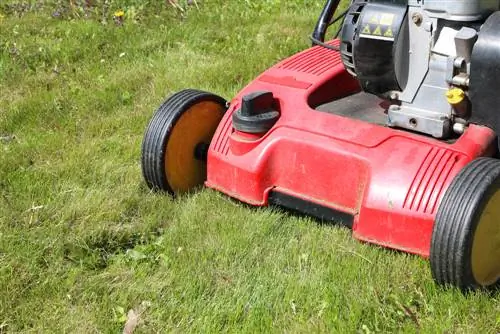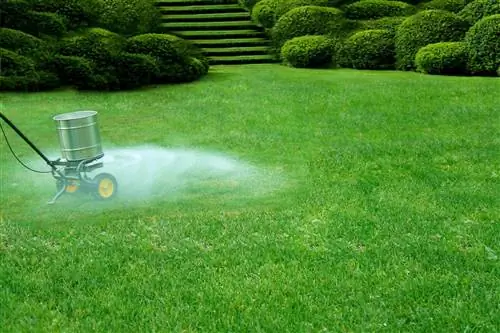- Author admin [email protected].
- Public 2023-12-16 16:46.
- Last modified 2025-06-01 06:02.
Moss is not a welcome guest in the garden if it spreads boldly in the bed, on stone surfaces and in the lawn. If you want to get rid of the green coating and stubborn felt, you will of course have to deal with a hardened opponent. You can read here how you can successfully destroy moss using ecologically responsible strategies.
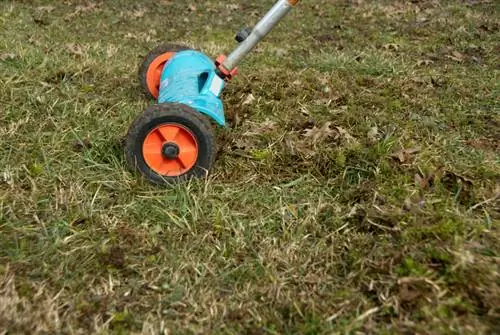
How can you successfully fight moss without chemicals?
To combat moss in an ecologically responsible manner, remove it from stone surfaces using joint or wire brushes and natural products such as soda or vinegar. In the lawn we recommend scarifying and adjusting the fertilization, while in beds you should rake regularly and fertilize organically.
Eliminating moss on stone surfaces - this is how it works without chemicals
Every year at the end of winter or after periods of damp and cool weather the same sad picture. Paved surfaces are covered with an unsightly, dirty green patina. If you want to get rid of the annoying moss quickly without polluting the environment, these control strategies are available to you:
- Meticulously scrape off the moss with a joint and wire brush
- Then spray the mossy area with a mix of 20 g soda and 10 l boiling water
- Apply apple or wine vinegar undiluted, leave to act for 24 hours and sweep away
It works faster with a solution of 15 g of potassium permanganate, which you mix with 10 l of water and spray on. After an exposure time of 5 hours you can brush off the dead moss.
Removing thatch from moss-covered lawns - How to do it right
You cannot permanently get rid of moss in your lawn with the frequently recommended iron fertilizer. Iron is actually always present in sufficient quantities in the soil. The highly toxic iron II sulfate contained in the fertilizer only kills the existing moss for a short time. Unless you improve the conditions for your lawn, new moss will settle in in no time.
Give your lawn an all-round feel-good treatment so that the noble grasses can effectively assert themselves against the penetrating moss. This is how it works:
- Mow and scarify the mossy lawn deeply in spring and autumn
- Subsequently supply with a nitrogen-based fertilizer in April/May and with a potassium fertilizer in September
- Additional sand to green areas that are at risk of waterlogging
Determine whether the value is between 6.0 and 7.0 with a simple pH test. If the result is below 5, 5, lime the green area.
How to remove moss from a bed
Flower and vegetable beds are not among the preferred areas of moss. If, on the other hand, the location is in a cool, shady location, fountain liverwort and the like have no qualms about occupying the compacted, moist soil. In this case, take control of the green pest.
By consistently raking and loosening the soil, the rhizoids cannot anchor themselves in the soil. Fertilized regularly with compost, horn shavings and rock dust, the bed will soon be free of moss.
Tip
In organic gardens, wood ash is traditionally recommended to destroy moss in an environmentally friendly way. The experts at the Bavarian Garden Academy wanted to know exactly. The results of their research revealed that even ash from untreated wood is contaminated with pollutants such as cadmium, arsenic, mercury and lead. The trees have absorbed these toxins over the years. Therefore, the experts strongly advise against using wood ash as a moss killer.

